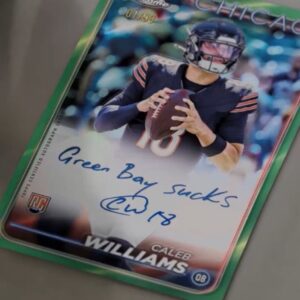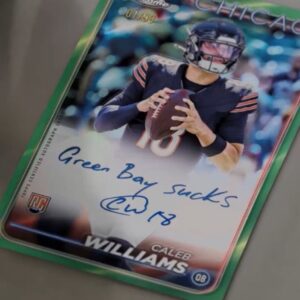When the news broke that San Antonio Spurs’ star player Victor Wembanyama would be sitting out the remainder of the 2024-25 NBA season due to deep vein thrombosis (DVT) in his right shoulder, the initial reaction was a mix of shock and concern. Spurs fans and basketball enthusiasts worldwide were forced into a state of suspended animation, pondering the broader implications of Wembanyama’s health scare on his bright, burgeoning career and the immediate consequences for his team.
The announcement, which came in February from the Spurs’ interim head coach Mitch Johnson, attempted to quash fears by emphasizing that there was no long-term concern for Wembanyama’s health. They assured fans that he was expected to make a full recovery in time for the 2025-26 season. Yet, as comforting as the words sounded, they left a looming cloud of doubt and anxiety hanging over the Spurs’ arena and the wider basketball community.
Not known for being a garden-variety sports injury, deep vein thrombosis, especially in the shoulder of an extraordinarily young athlete, isn’t a trivial matter. Historically more associated with less active populations and commonly found in the legs, DVT raises significant questions about Wembanyama’s bodily resilience against the grueling physical demands of professional basketball, and the particular strain it exerts on gifted players of his towering stature and unique physique.
Once likened to being on a fast track to basketball immortality, Wembanyama’s career narrative now bears an unsettling resemblance to Chris Bosh’s unfortunate saga with recurrent blood clots—a health issue that tragically truncated what could have been an extended Hall of Fame career. The specter of that career-ending condition has inevitably prompted speculations about Wembanyama’s longevity in the league. It brings forth the unsettling question: Could Wembanyama be facing the first concerning chapter in an otherwise script for an illustrious career?
While the Spurs have reiterated that Wembanyama’s DVT does not pose an immediate life-threatening risk akin to Bosh’s experience (where clots had reached his lungs, leading to pulmonary embolisms), the unpredictable nature of clotting disorders means it’s premature for stakeholders to breathe easy. The basketball world, including rival franchises, will maintain a vigilant watch for any hints of recurrence that might darken the horizon for the young giant.
Not far removed from the primeval understanding of what makes a star endure such unfortunate episodes, Wembanyama’s incredible stat line up until the injury—averaging 24.3 points, 11 rebounds, and leading the league in blocked shots—is yet another scratching point for fans who now face the chilling realization that this injury paused him at the peak of his opening flourish.
With the Spurs busy crafting a competitive framework around their wunderkind, reeling in De’Aaron Fox in an effort to somehow jolt their playoff race hopes in the Western Conference, this untimely blow necessitates an abrupt strategic reorientation. It’s back to the drawing board for a team pushed to redirect its prospects from current competitive aspirations to the nurturing of potential future successes.
Besides the immediate team dynamics reshuffling, there’s a subtle, yet significant undercurrent rippling through the rookie card marketplace. Renowned for thriving on exuberance, performance, and continuity, the collectible card market responded predictably to Wembanyama’s abrupt hiatus with a pricing dip. Investors and collectors would historically lower their stakes on newcomer stars hindered by significant early career injuries.
Wembanyama’s premier Panini Prizm and National Treasures RPAs faced a synchronized decline as the anticipation narrative, once robust with layers of excitement, slumped under the heavy weight of newfound uncertainty. But like sharks sniffing for opportunity amongst chaos, seasoned collectors might view this downturn as an opportune moment—a chance to ‘buy low’ and await the rising tide, betting on Wembanyama’s eventual resurgence and his trajectory that could bring sealing cheers when he reclaims his place in the annals and courts of greatness.
Similar phenomena famously affected another star-crossed athlete, Zion Williamson, whose injuries similarly allowed gravity to temporarily ground his skyrocketing rookie card values. Yet, through persistence and recovery, Williamson’s marketplace outlook rebounded, documenting a full cycle from the depths of concern to renewed optimism—a cycle that may well forecast Wembanyama’s potential resurgence.
Even as the nuances of Chris Bosh’s case hover ominously, it’s vital to remember that each athlete’s path forward is as distinctively carved as their fingerprint. The young Frenchman finds himself in a crucible of upheaval that might yet temper his early misfortunes into the mettle of a seasoned competitor. His resilience amidst adversity could well shape whether he matures into the transformative player his immense talent portends or if he finds himself beset by pernicious health challenges that reroute even the most tenacious of stars from stardom to uncertainty.
Victor Wembanyama’s current pause is but one scene in the unfolding drama of his life on the hardwood. As the future stands unscored and the journey thickens with unyielding anticipation, it’s the testing of heart, body, and spirit that will indelibly measure the distance between enduring success and enduring challenge. The trip back to dominance may be measured by more than just a scoreboard; it’s a saga of survival and triumph—to emerge with tales and tokens of resilience sculpted by the game of basketball and the tenacious will to rise again.






